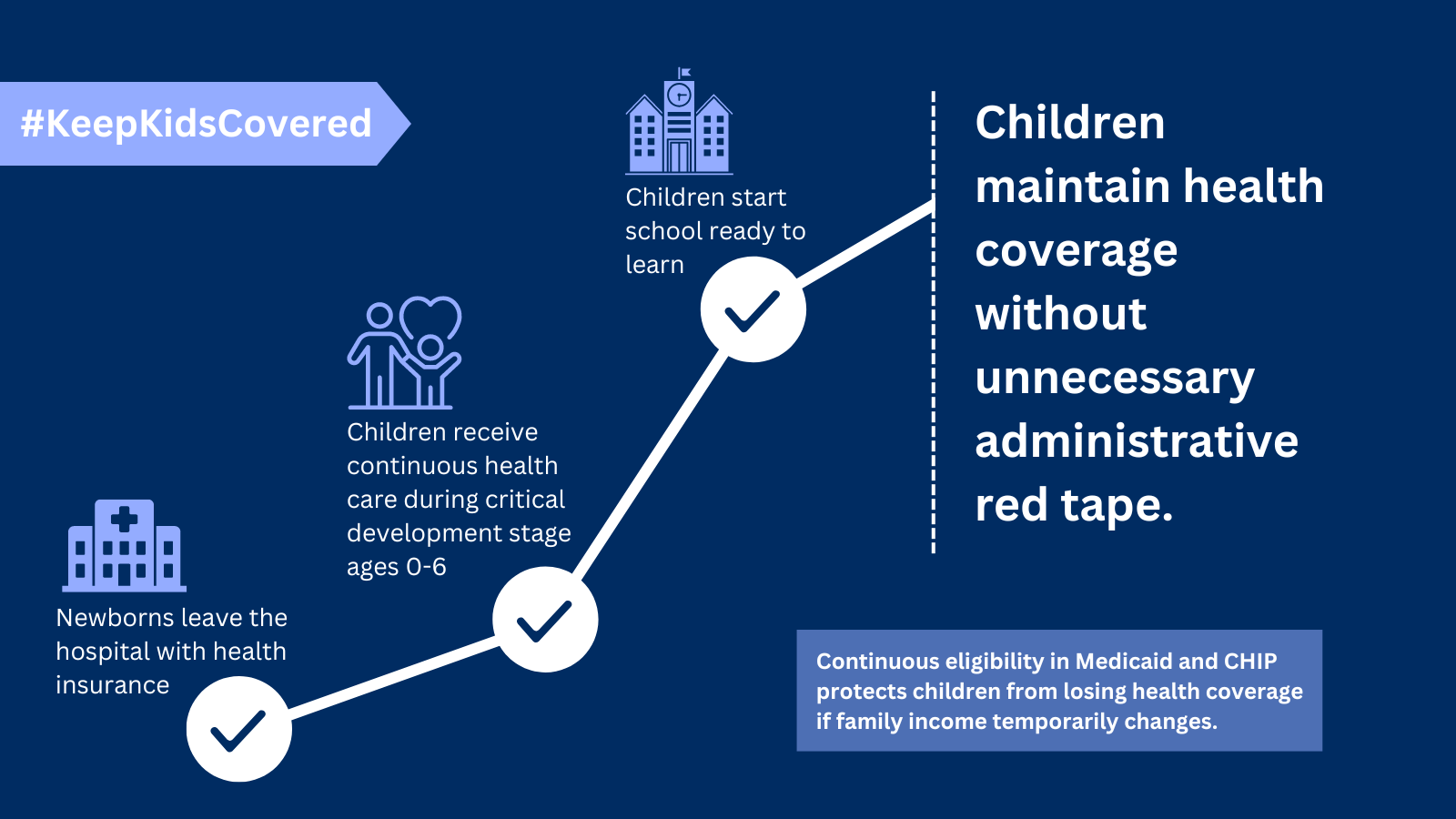As of January 1, 2024, all states are required to provide 12 months of continuous health coverage for children in Medicaid and the Children’s Health Insurance Program (CHIP). This reduces the risk of eligible children losing coverage due to administrative barriers or temporary fluctuations in family income. In 2022, Oregon became the first state approved to take this policy option a step further by providing multi-year continuous coverage to young children from birth up to age 6. Since then, several states began developing or implementing their own multi-year continuous eligibility programs. The map below shows these states, delineating between those that have plans currently in development and those whose waivers have been approved by the Centers for Medicare & Medicaid Services (CMS) and are currently implementing their programs. The data in this map is updated on a rolling basis as states take action. For more information about our sources, please click here.
Once enrolled, it is critical that children stay insured without unnecessary administrative red tape. Even a short gap in coverage can result in a child missing needed care such as treatment for chronic conditions like asthma; left untreated, these conditions are likely to result in visits to the emergency room and missed school days. Gaps in coverage can also create financial hardship. Even if just one family member is uninsured, the whole family is exposed to incurring medical debt, placing their economic security at risk. Additionally, providing children with continuous coverage leads to greater coverage rates which are associated with better health, reduced school absenteeism, and higher academic achievement for children and, potentially, fewer lost work days and lower medical debt for their parents.
Hourly employees and those working in seasonal jobs or more than one part-time job are particularly likely to experience income fluctuations that occasionally may raise their incomes above the child Medicaid or CHIP eligibility thresholds for short periods of time, even when their annual income remains below the thresholds. An estimated 70 percent of mothers and 80 percent of fathers of children under age 12 working in hourly jobs have erratic schedules that fluctuate substantially. Providing children with continuous coverage protects them from experiencing a gap in health coverage due to temporary changes in household monthly income.


